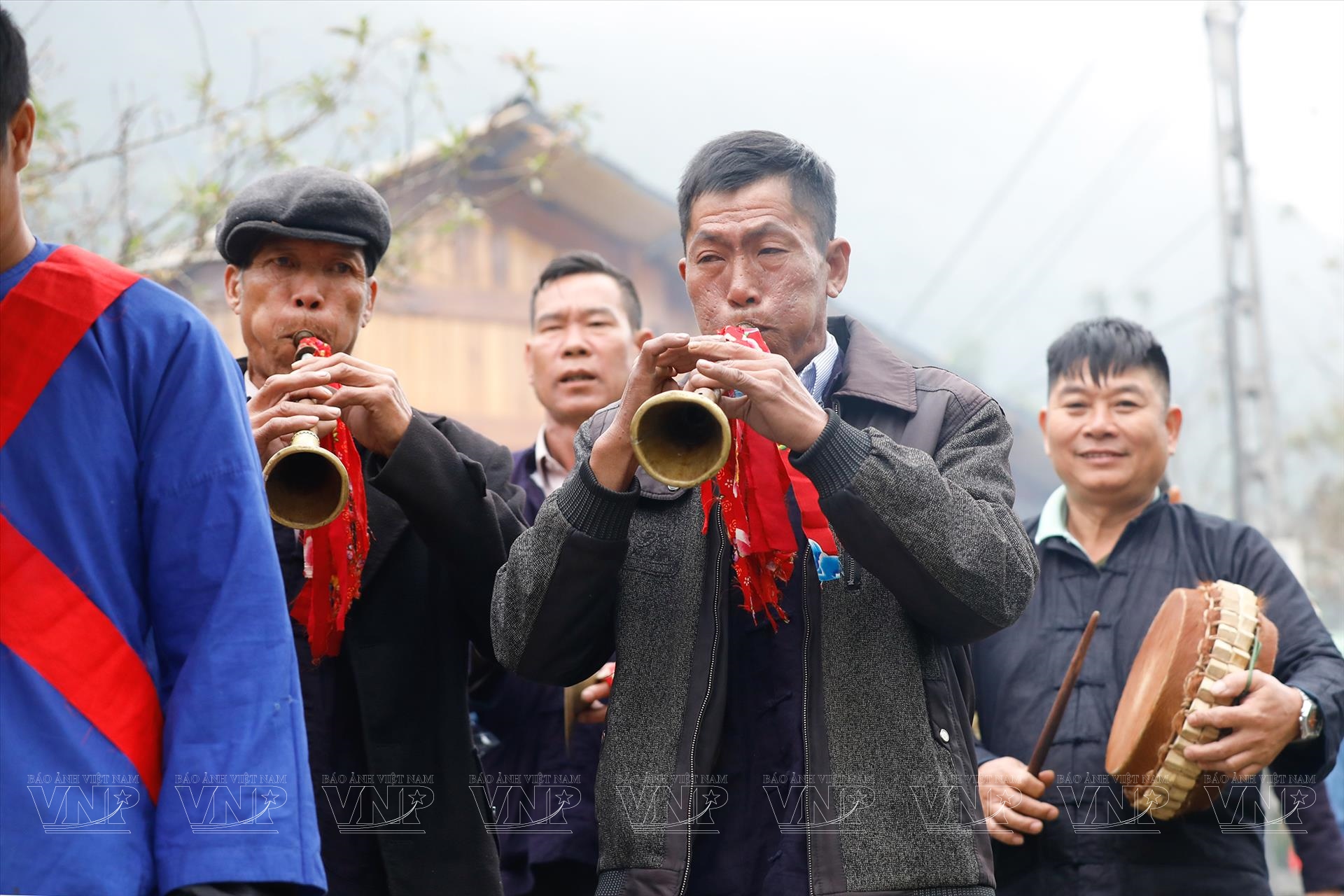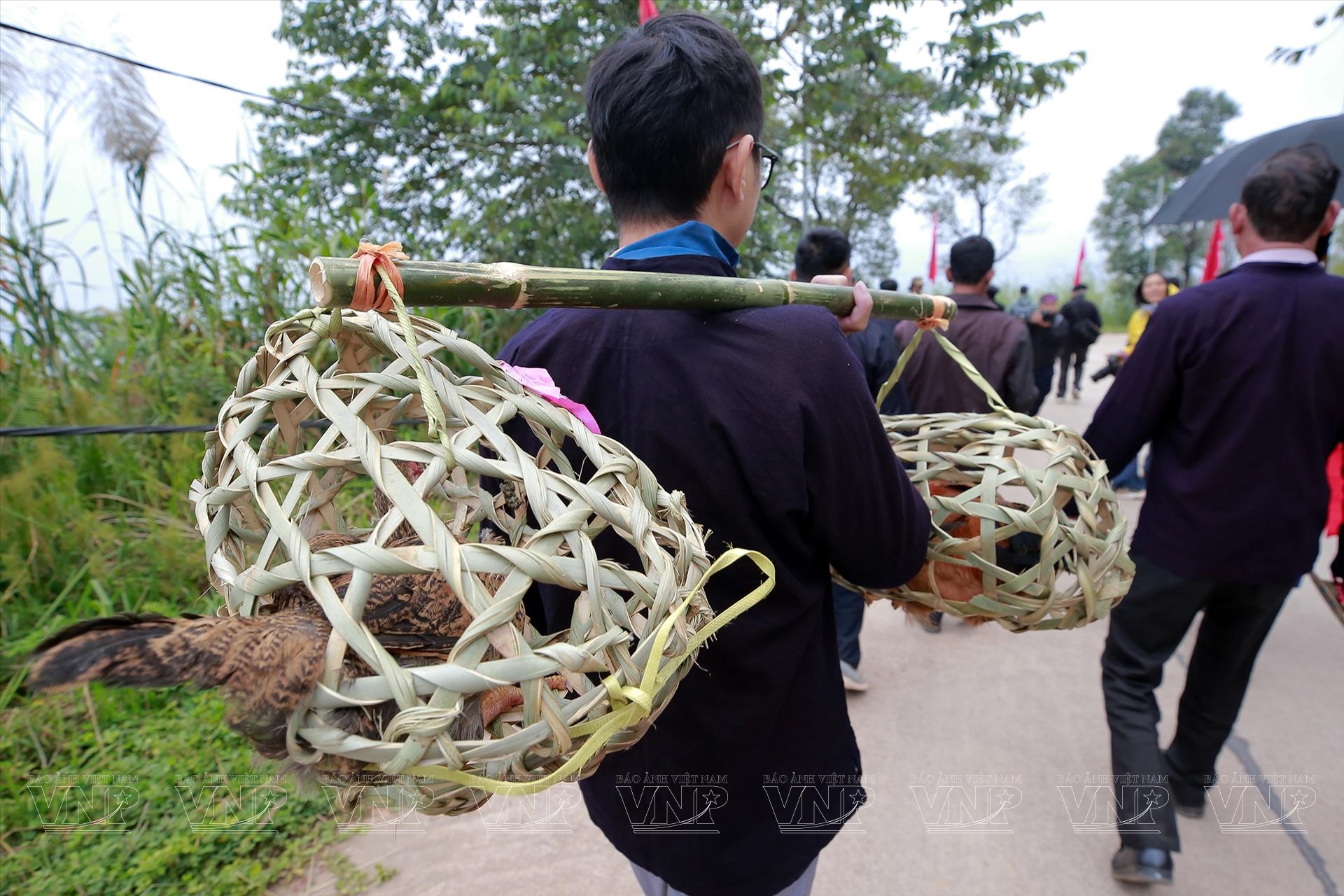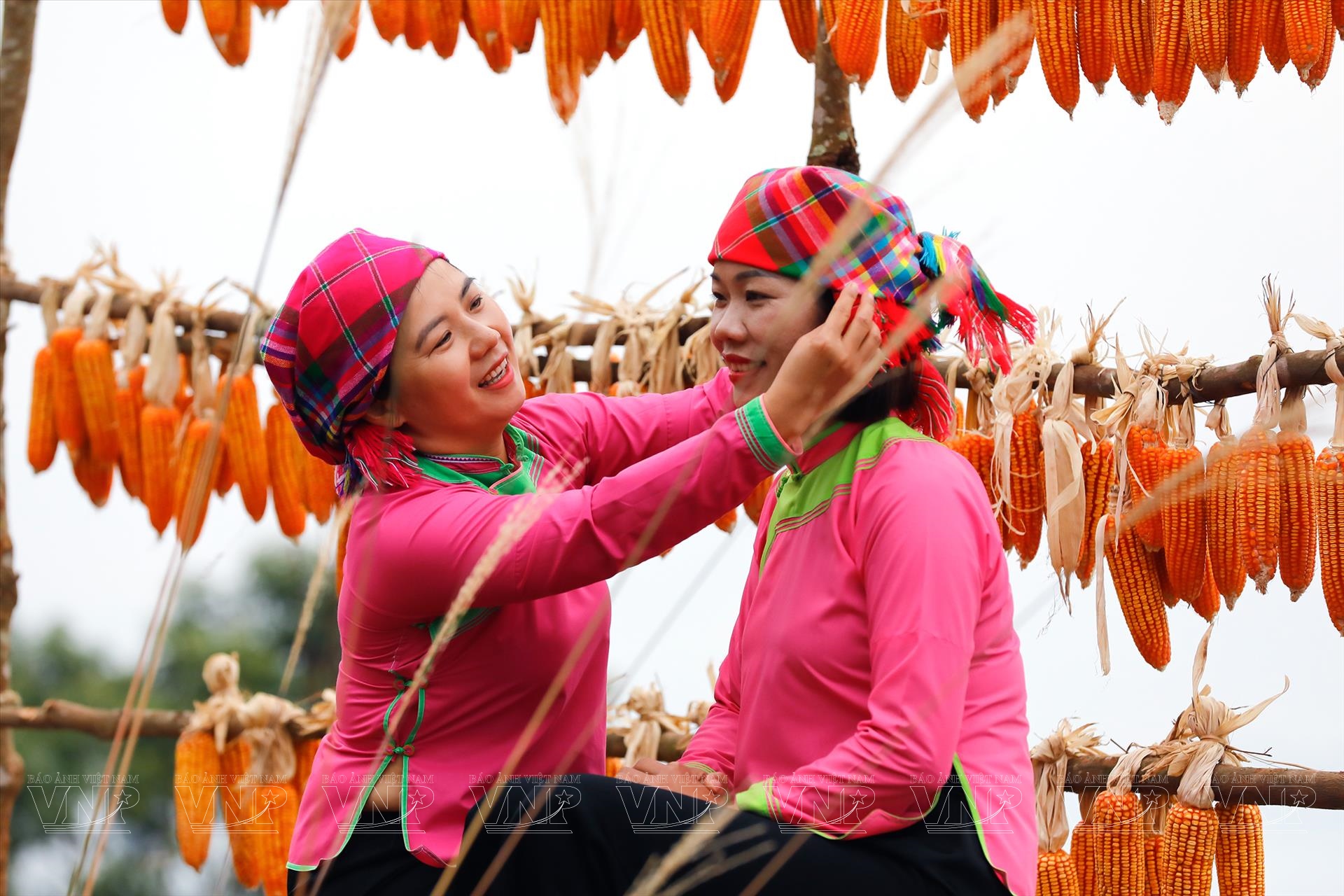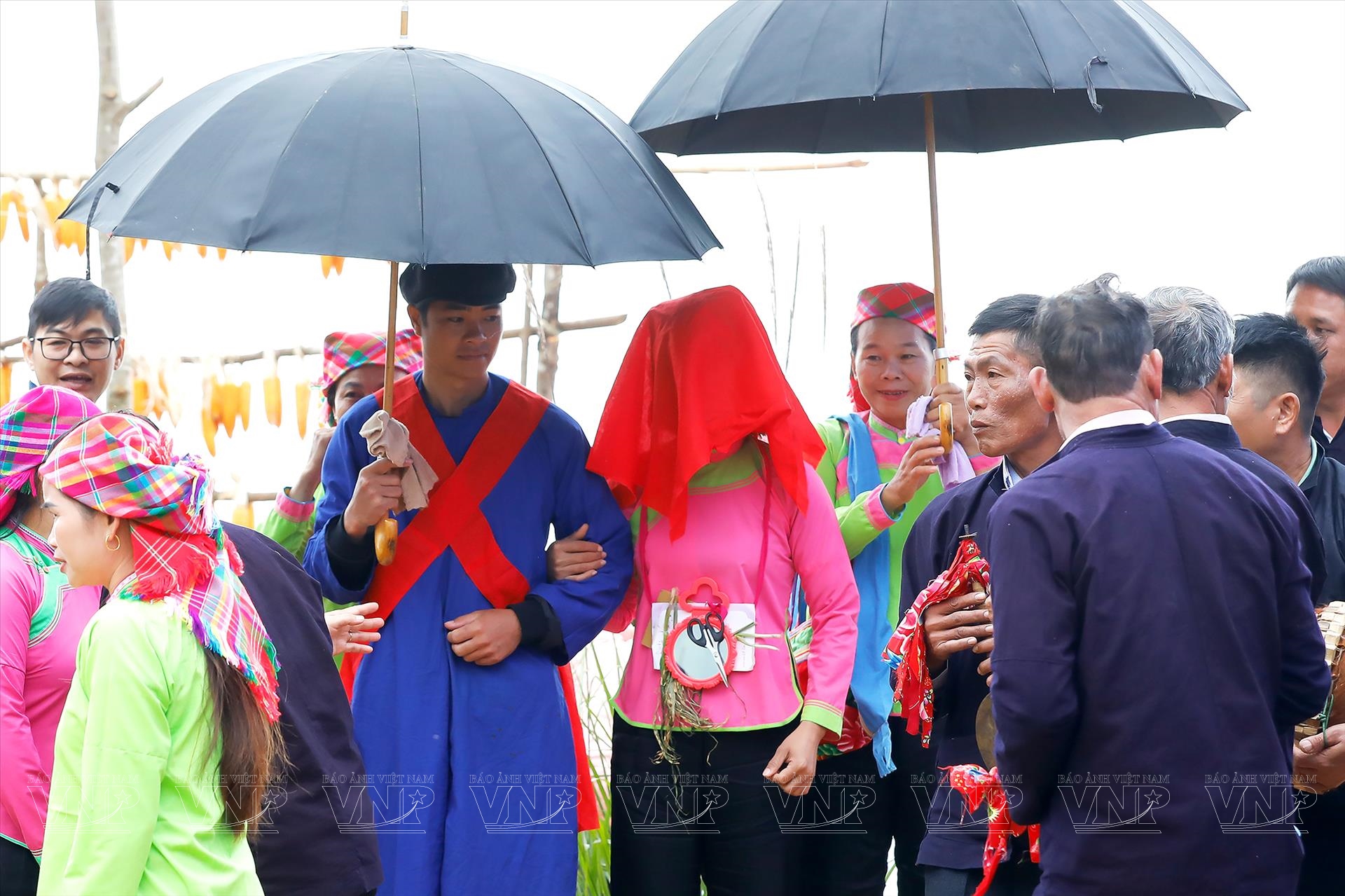A Giay’s Bride Welcoming Ceremony
In marriage, the Giay pay much attention to virtues and family traditions of both groom and bride. Giay wedding customs, passed down through generations, are rich in folk songs and dances. A Giay wedding is like a village festival.
Before the wedding day, the two families perform the proposal ceremony, the age-matching ceremony, and the engagement ceremony. On the wedding day, the groom's party will come to the bride's house to bring her to their house.
Before departing, the groom wears a traditional long dress, two striking red sashes crossed over his chest, a black hat, and carries a black umbrella, creating a dignified appearance. The highlight of his attire is the pink scarf he holds in his hand. This symbolizes good luck and happiness, given to the groom by the older women in his family. The matchmakers and the groom's relatives all choose the most beautiful traditional costumes for this special day.
At the auspicious hour, the groom’s party departs from the groom's house, carrying the betrothal gifts to the bride's house. Leading the group is a band playing pi keo (a type of traditional horn). The band consists of five members: two playing brass horns, one playing a small cymbal, one playing a drum, and one shaking a bell. The groom moves to the rhythmic and melodious sounds of cheerful tunes.
Upon reaching the gate of the bride's house, the group stops before a red rope tied across the gate. The bride's matchmakers stand in front of a table with bowls of pink water and cups of wine. The pi keo music stops to make way for a folk song duel. The matchmakers from both sides will sing back and forth. Occasionally, they will sprinkle water to bless everyone. The singing duel lasts for a few minutes until the bride's family is satisfied and removes the red rope, ending the gateopening ceremony. The matchmakers raise their cups of wine to toast and then present the envelopes and gifts, asking permission to enter the bride's house.
Inside the bride's house, the bride, dressed in traditional attire with a multi-colored square scarf wrapped around her head and an additional red scarf covering her face, awaits. Upon entering, the groom's party performs the traditional ritual of burning incense to ask for permission to take the bride.
After the ceremony, the bride's family holds a feast. Everyone congratulates the bride and groom with cups of warm corn wine. They sing congratulatory songs with lyrics reminding the newlyweds of the meaning of family and how to behave in their married life. After the feast, the bride and groom go before the family altar to bow to their ancestors and ask for permission to leave.
The group returns home in a more joyful atmosphere. The newlyweds and everyone else walk to the rhythmic sounds of the pi keo band, with the drums beating. The traditional tunes of the pi keo band seem to encapsulate the joy and happiness, spreading throughout the space and uplifting everyone's spirits. Along the way, the occasional singing duel can be heard. The sincere and humorous lyrics serve as blessings and advice for the newlyweds. The atmosphere is lively, yet warm and intimate, creating a unique, beautiful, and memorable bride-welcoming ceremony for the Giay./.
- By Viet Cuong/VNP Translated by Hong Hanh














